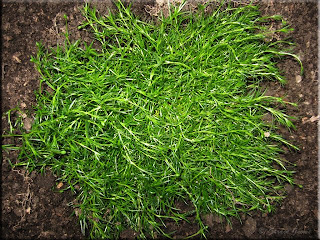
Happy Gardening!
Garden Gnome
©2007



If you have been following this blog you will already have noticed that I try to include the Latin (scientific) names of plants, pests and other critters in my garden. The main reason for this is to avoid confusion from using common names. Common names tend to be region specific and sometimes as with Irish moss the name refers to two unrelated plants where Sangia subulata is an herbal ground cover and Chondrus crispus is an edible seaweed, so two very different plants with the same common name. So when referring to garden plants especially it is best to use include the scientific name. This also becomes very important when ordering seeds so that you end up with the exact plant you want. It is not as critical to use scientific names for pests like squirrels or rodents as the control measures will be the same, however it is beneficial to use scientific names if possible as prevention and/or control may differ.
Taxonomy is the practice and science of classification of living organisms. It starts very broad with Kingdom that is divided into monera, protista, fungi, plantae and animalia based on common characteristics. For example Kingdom Monera consists of prokaryotic cells or simply bacteria. All bacteria have a common characteristic that sets them apart from other Kingdoms. Each of these are subdivided into Phylum which is further divided into Class. The subdividing of each Class is the Order. Following this is further subdivisions to form Family, Genus and Species. When referring to plants scientific name usually includes the Genus followed by the species and sometimes subspecies denoted as "spp. subspecies name. As the divisions from Kingdom to Species continue they become more and more specific. Naming is based on Latin that describes some aspect of the characteristic of that division. For example all the common lilac is Syringa vulgaris. Syringa is derived from syrinx that means hollow tube referring to the broad pith in some species that can be hollowed out to make reed pipes and flutes. So all plants in the Genus Springa will have this common characteristic.
To recap the classifications are:
Convention dictates that when using scientific nomenclature, the Genus is capitalized, the Species is not. The names should be in italics or underlined. For example Sangia subulata or Sangia subulata. The full Genus name can be shorted to the capitalized first initial in italics followed by a period, space then the full name of the Species. For example Sangia subulata can be written as S. subulata. For the purposes of this blog the main nomenclature will involve Genus species or Genus species spp. subspecies.
Happy Gardening!
Garden Gnome
©2007


Dear Readers, when we go on vacation you are used to seeing the "'puter on vacation" image. This time I decided to do two things differently. Thanks to Blogger's new scheduling option, I've worked quite hard to give you a few scheduled posts for reading during my absence. That means I created these posts before leaving but have each scheduled to go online on different dates. By the time you read this post, we will be on our way. I hope you enjoy them. The second difference is as a new owner of an iPod Touch I will be able to stay in touch with blog comments, emails and may even make a blog post while away. Although I won't be online much, this will be a nice change for when I want a little personal down time. The iPod Touch will be a lot easier to travel with than the laptop as well.
Happy Gardening!
Garden Gnome
©2007





